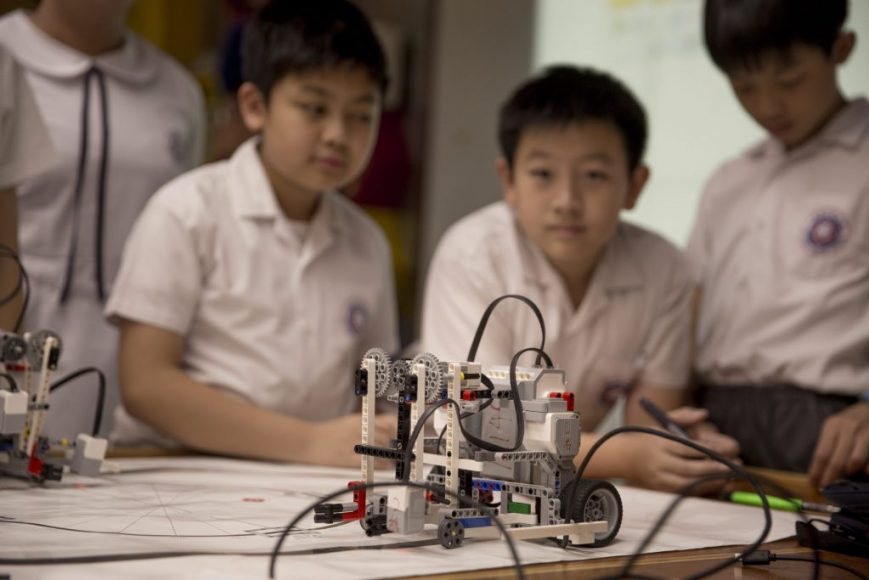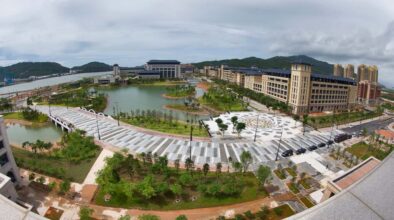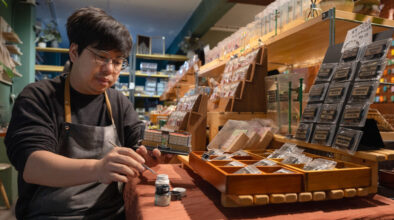Macao’s Pui Ching Middle School finds new ways to promote talent diversity and creates new educational trends among local schools.
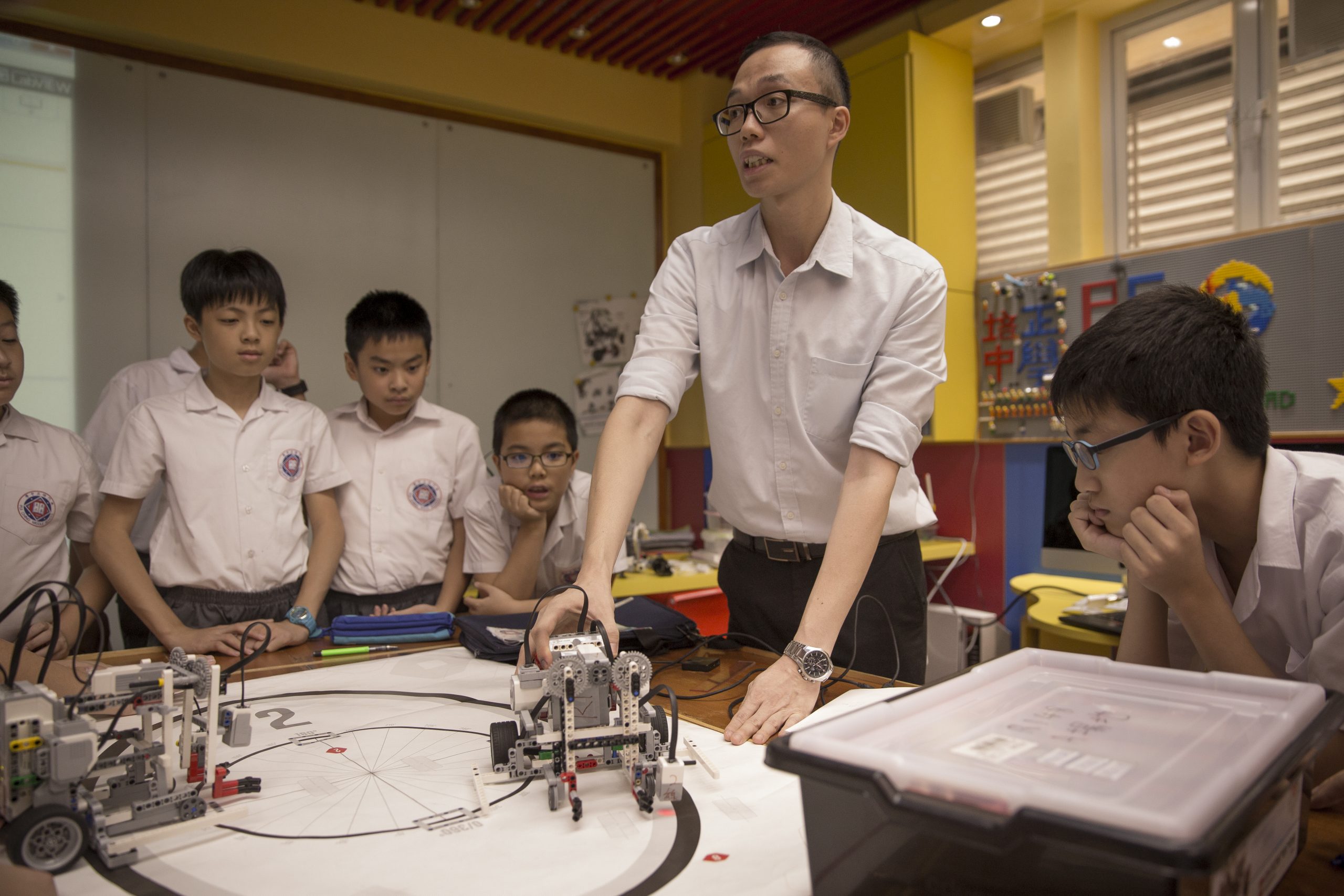
The LEGO Education Laboratory is one of the most vibrant learning spaces at the Pui Ching Middle School in Macao. There, you will find colourful LEGO models, lab tables and a group of curious students, all around 12 years old, surrounding their teacher as he explains algebraic equations about distance and speed with robotic cars.
You may wonder, is this too complicated for students at this age? Yet from the eagerness they expressed while answering questions, the effect of an interactive learning environment is clear: there is no limit to a young mind if the teaching is engaging and motivating.
In a few years’ time, these students may develop a clearer vision for their future. Should they decide to pursue a path of technology, they will join their senior schoolmates in the fabrication laboratory, or Fablab – an upgraded version of the LEGO Lab – to build robotic machines, develop applications, and prepare for major tech competitions in the city and beyond.
Despite its long history, having fled the war in Guangzhou to settle in Macao in 1938, the Pui Ching Middle School strives to stand at the forefront of innovation through a holistic approach to education. Students of Pui Ching stand out in different areas and frequent the podiums of local and overseas contests in sports, literature, and science.
But in 2012, Pui Ching found a new avenue to further promote diverse talent among its students: STEM (science, technology, engineering, and math). When it was introduced to the school’s academic program, STEM had yet to become a buzzword of education in Macao and even across China.
A visionary take
Arguably originating in the US, STEM education dates back to the mid 90s when entities such as National Research Council assisted educators in the country to develop curriculum in STEM fields by establishing standards and guidelines. It gradually became a leading trend in the field of education after a number of conducive measures such as the Educate to Innovate initiative, launched by the then President Barack Obama in 2009, which provided billions in additional federal funding for STEM education programs across the country.
In China, STEM education has also gained prominence in recent years due to the country’s rapid technological advancement. In 2015, Premier Li Keqiang visited the Chaihuo Makerspace in Shenzhen – one of the first collaborative work spaces in China that provides high-tech electronic equipment such as 3D printers and laser cutters. Two months later, ‘makerspace’ debuted in the central government’s annual work report, being regarded as an important platform for promoting critical skills in the fields of STEM. Meanwhile, the government’s Made in China 2025 strategy published in May of that year laid out a plan to promote innovation-led economic growth, and to change China’s focus from low-cost manufacturing to innovation, creativity, and design.
Since then, the momentum of STEM education has grown stronger than ever, as cities, communities, and schools at all levels respond with various endeavours. In 2017, Shenzhen, one of China’s leading technology hubs, inaugurated the Greater Bay Area Innovation and Science Youth Education Base (粵港澳大灣懖青少年瞴新科學教育基地). Aiming to recruit more than a hundred schools in the regions, the education base seeks to promote the quality and integration of STEM education within the region.
Back in Macao, Pui Ching’s response to the tech trend actually began a few years earlier, when STEM education was introduced to the curriculum of its Form 1 and 2 students as an elective subject in 2012. The programme was later extended to Primary 5 and 6, from which students will acquire fundamental knowledge and hands-on skills related to programming, information and design technology.
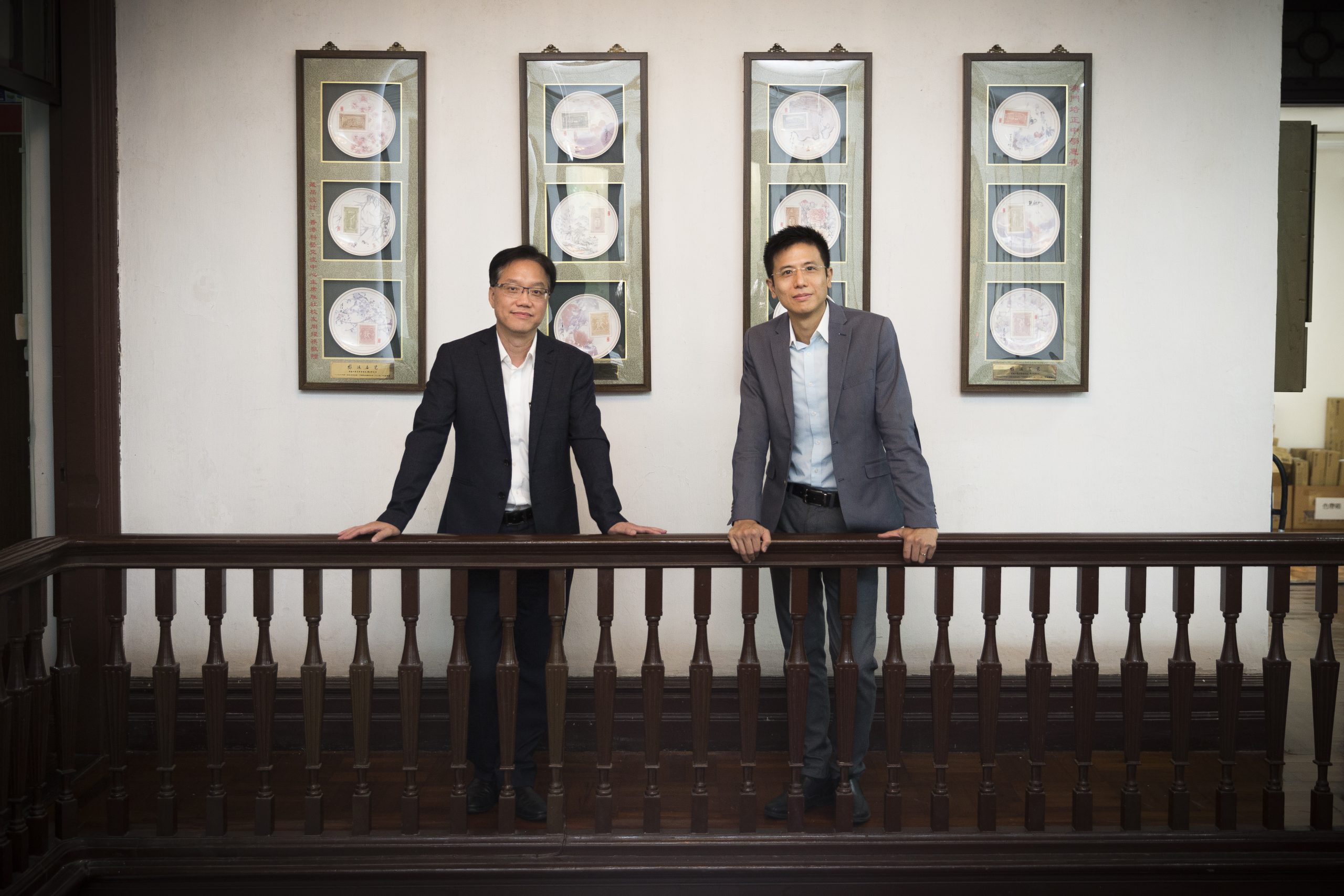
“This is for meeting the needs of students with different strengths and interests,” explained Kou Kam Fai, principal of Pui Ching Middle School since 2006. Such difference, according to Kou, can be observed in students who have just reached Primary 1: “Some students score well on exams while others perform better at cooperation or creativity.” As the programme allows students to work together on tech projects, the visionary educator believes that their ability to create, cooperate, and solve problems will be greatly enhanced.
The LEGO Education Lab at Pui Ching, launched in 2016, now serves as the major STEM teaching space for students from Primary 5 to Form 1. Through combining mathematics, science and design skill, the students learn to build simple robots with LEGO kits. It is also the first experiment base established within the campus of basic education institutions in Macao and Hong Kong.
Vice Principal Chan Keng Lim is the driving force behind the STEM programme. He believes that through making their own robots, students will develop critical thinking habits that drive them to ask questions and look for answers. “We hope that they can have the mind of a scientist and the creativity of an artist,” he said.
The programme has become a popular subject, which today sees applications from more than 150 students at each level, making up 60 per cent of the students from the entire level. However, just as every opportunity needs to be actualised by hard work, so does an enticing programme require a fair amount of effort to get into. For those who want to embark on a STEM path at Pui Ching, they will need to go through interviews, write short essays, demonstrate DIY skills and, inevitably, to experience success or failure (if declined).
“We think it is important for them to go through such an experience at an early age – to fight for something they desire,” Chan explained. “This will help them know more about themselves, and be better prepared for the future.”
An unlimited journey
As the students advance to Form 3 at Pui Ching, they will be required to choose between three main streams – science, arts, or art-science stream – a common practice in most of Macao’s secondary schools. However, for those who have developed a strong passion for STEM, their journey doesn’t end there.
Starting from Form 3, STEM education is streamlined into the art-science stream (uniquely created by Pui Ching to combine subjects from both the science and arts fields in one stream). Experiment and tech projects are conducted at the Fablab, where students will be exposed to hands-on engineering experience from operating high-tech equipment, through to designing and building complex, medium-sized robots with metal.
Launched in 2015, the Fablab of Pui Ching is also the first makerspace in Macao and Hong Kong. The lab offers a range of sophisticated machines for 3D-printing, laser cutting, circuit production, and CNC and precision milling. It is now a member of the international Fab Lab community, a network of around 1,000 fab labs in more than 40 countries, managed by the Center for Bits and Atoms of MIT (Massachusetts Institute of Technology) in the US.

Now that Pui Ching has become a leading power in a certain field, we feel committed to bolstering progress in the region.
Chan Keng Lim
The Fablab is also an important base for many Pui Ching students to prepare for local and international tech competitions. Wong, currently a Form 6 student, is a two-time contestant on FIRST Tech Challenge (FTC), an annual international event designed for students from around the world to compete in teams by designing, building, and programming a robot.
The competition last year took her team to Australia, where they made it to the Final 8. Before that, Wong and her team had devoted many evenings to ready their robot for multiple challenges, such as projecting and moving objects.
“It was an eye-opening experience, being able to compete outside Macao and meet a lot of outstanding young people,” she reflected. “I’ve also made a lot of good friends throughout the process. We shared the same passion, and spent hours together learning new things and building our robots. This is truly unforgettable.”
A regional leader
In August 2018, Pui Ching was honoured with the first prize in state-level teaching achievement award by the Chinese Society of Education. It was the first school in Macao SAR to receive the prestigious award, and the only school to be awarded for STEM education in the entire country.
Chan believes that this is largely attributed to the school’s relentless effort in promoting STEM education in Macao and beyond. “Now that Pui Ching has become a leading power in a certain field,” he said, “we feel committed to bolstering progress in the region.”
As an example, Chan referred to one of Pui Ching’s biggest accomplishment in robot development: underwater robots. “With years of experience in building [these robots], we are keen on sharing our skill with other local schools and have hosted multiple workshops for their students to attend throughout the years.”
This included the World Robot Olympiad (WRO) workshop which took place at Pui Ching in June 2018. The WRO is an annual global robotics competition for young people, and the workshop aimed to prepare Macao students for the 2018 competition held in November in Chiang Mai, Thailand. The two-day workshop in June was attended by more than 100 students and teachers from 22 local schools. Chan described it as a fruitful exchange of knowledge between the students of Pui Ching and the other schools.
Meanwhile, the school has been proactive in organising educational exchanges across the region. Since September 2012, it has received more than 4,000 guests from 200 organisations across mainland China, Hong Kong, and Taiwan. The visitors included officials from Ministry of Education, Beijing Municipal Commission of Education, and other central government agencies.
The Greater Bay Area (GBA) Initiative also motivated Pui Ching to build stronger connection with education institutions in the member cities. In collaboration with the Association for Promotion of Science and Technology of Macao, Shenzhen Institutes of Advanced Technology and Maker Institute, CAS, Pui Ching reached out to a number of schools within the GBA in 2017 and invited them to visit its labs and STEM classes. In the same year, it was appointed as a ‘pilot school’ of the GBA Innovation and Science Youth Education Base, alongside with 13 other schools in Hong Kong and mainland China. Since then, Pui Ching has been an active participant of the seminars, exchanges, and competitions organised by the education base. It has also conducted numerous exchanges of visits with other schools within the GBA.
According to Chan, the achievement made by Pui Ching in STEM education has often left the visiting guests in wonder. “They keep asking, how did we do this?” he smiled, noting how they commended the school’s willingness to break new ground. “The STEM programme, together with other extra-curriculum activities, enable our students to devote more than 10 hours each week to focus on creative projects. This is a great way to motivate them to learn,” Chan pointed out.
But to Kou and Chan, there is a bigger ambition behind the STEM initiative: “We hope that the STEM programme is a solution to lift the hidden talents that have been obstructed by the traditional system, where only students making high marks in exams are considered outstanding,” Chan explained. “It is our aim to be a leading institution in the entire country to promote educational reform.”
A turbulent origin
Pui Ching College originated in Guangzhou in 1889, the first modern school established by Chinese Christians. In its early decades of operation, the school weathered a financial crisis only to come under assault in the Second Sino-Japanese war.
Following the Mukden Incident in 1931, the school became a local force of resistance against the Japanese invasion. Its teachers and students organised rounds of campaigns to promote patriotism and raise funds – the school even provided a free education to refugee children.
However, as military conflicts between China and Japan intensified, Pui Ching College was forced to relocate to Macao in 1938 in order to maintain the quality of teaching. It rented parts of Lou Lim Ieoc Garden to host classes.
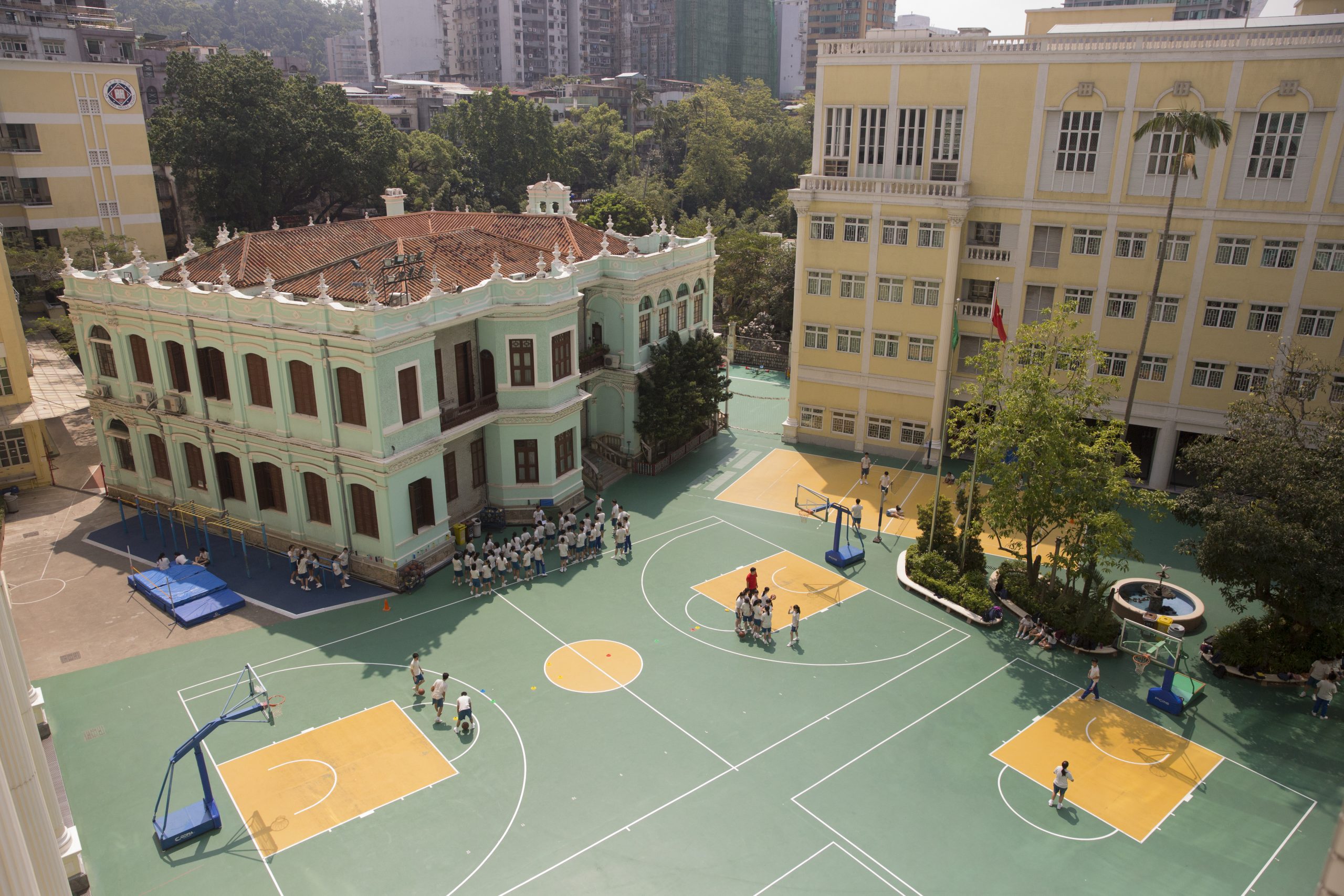
In 1950, Pui Ching College was renamed as Macau Pui Ching Middle School with Lei Yim Leng as the principal. Two years later, sponsored by Chong Chi Kwong and Ho Yin, a prominent Chinese philanthropist in Macao, the school purchased the mansion of Lou Lim Ieoc Garden and parts of the garden to build a permanent campus.
Today, the dynamic and spacious campus of Pui Ching Middle School is a far cry from its humble beginning at the historic garden. Whilst maintaining a Christian influence, the school now comprises kindergarten, primary school and secondary school, and accommodates an average of 3,000 students and 300 staff.
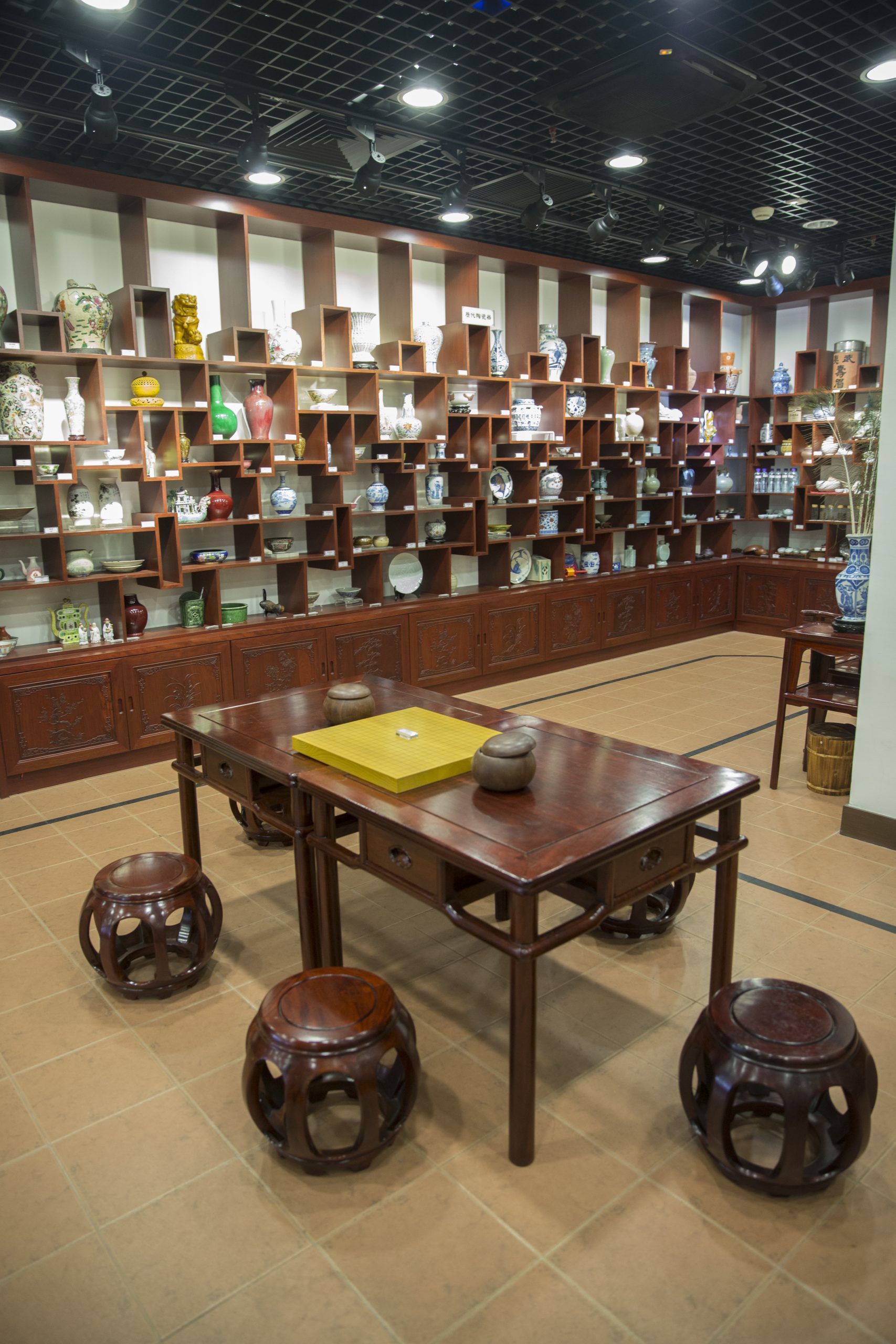
Chinese Cultural Arts Gallery
“A lot of people think that the strength of Pui Ching lies in science and mathematics, but I think we are equally strong in history and culture,” said Vice Principal Chan Keng Lim. With strength in both areas, Pui Ching is determined to integrate science into Chinese culture.
For example, since 2017, students of Pui Ching have been collecting spring water around the Greater Bay Area. After confirming that the water supply is suitable for drinking at its Chinese Cultural Arts Gallery, the students will pair the samples with different kinds of tea in order to determine the best combination. The school is aiming to publish a thesis on this study.
Meanwhile, the school is also developing a lion-dance robot. Through programming, the robot can be instructed by mobile apps to perform different moves. “It will be a dancing lion that never feels tired,” smiled Chan.
Underwater Robotics Team
The way Form 6 student Lam Ian Iong found her passion for engineering may resonate with a lot of engineer buffs: “I remember I dismantled a lot of toys when I was a child. I wanted to understand how they worked, and how to repair them when they ceased to function.”
When Lam got to secondary school, she found a perfect place for herself in the Underwater Robotics Team. Comprising 30 students from different levels of secondary school, the team specialises in marine robot development.
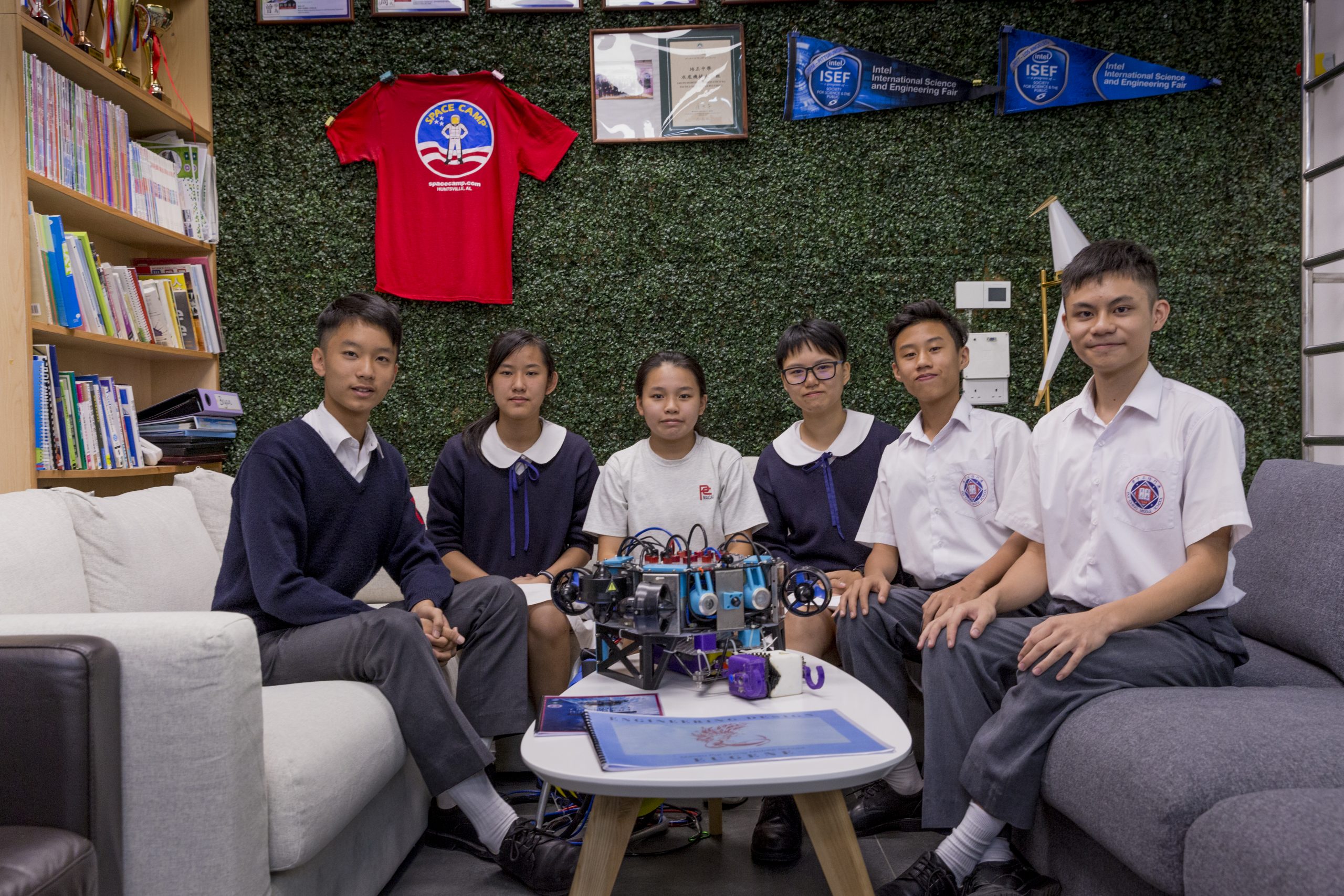
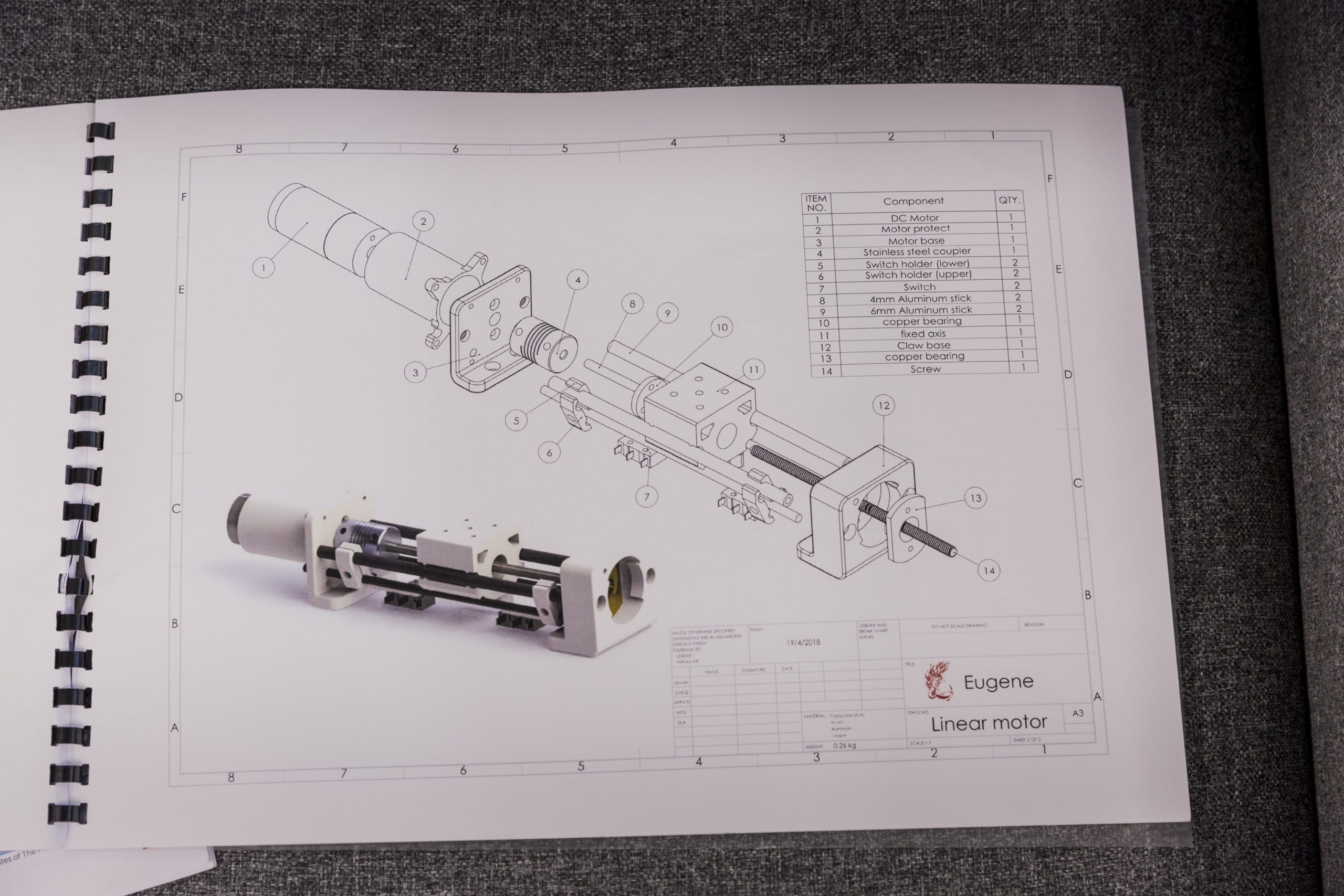
One of the major projects is the underwater robot. Equipped with four cameras and LED lights, it has a changeable floating system and an arm that can be mounted with different tools.
“This is for joining the annual MATE [Marine Advanced Technology Education] International ROV competition. We keep optimising the robot in accordance with the mission assigned by the competition,” Lam explained. “This time, our goal is to make sure that the robot is able to collect samples in the water and assist with underwater repair work.”
Meanwhile, the team is also developing an autonomous boat to assist in disaster relief, inspired by the typhoons that strike Macao in summer. “The boat is smaller and faster than the normal one controlled by human,” Li Hei from Form 3 explained. “Equipped with facing scanning system, it will cruise around the flooded area looking for survivors and send signals back to the station whenever a survivor is detected.”
The primary model of the boat is completed and has been submitted to Intel International Science and Engineering Fair (Intel ISEF) for evaluation.
Astronomical and Meteorological Association
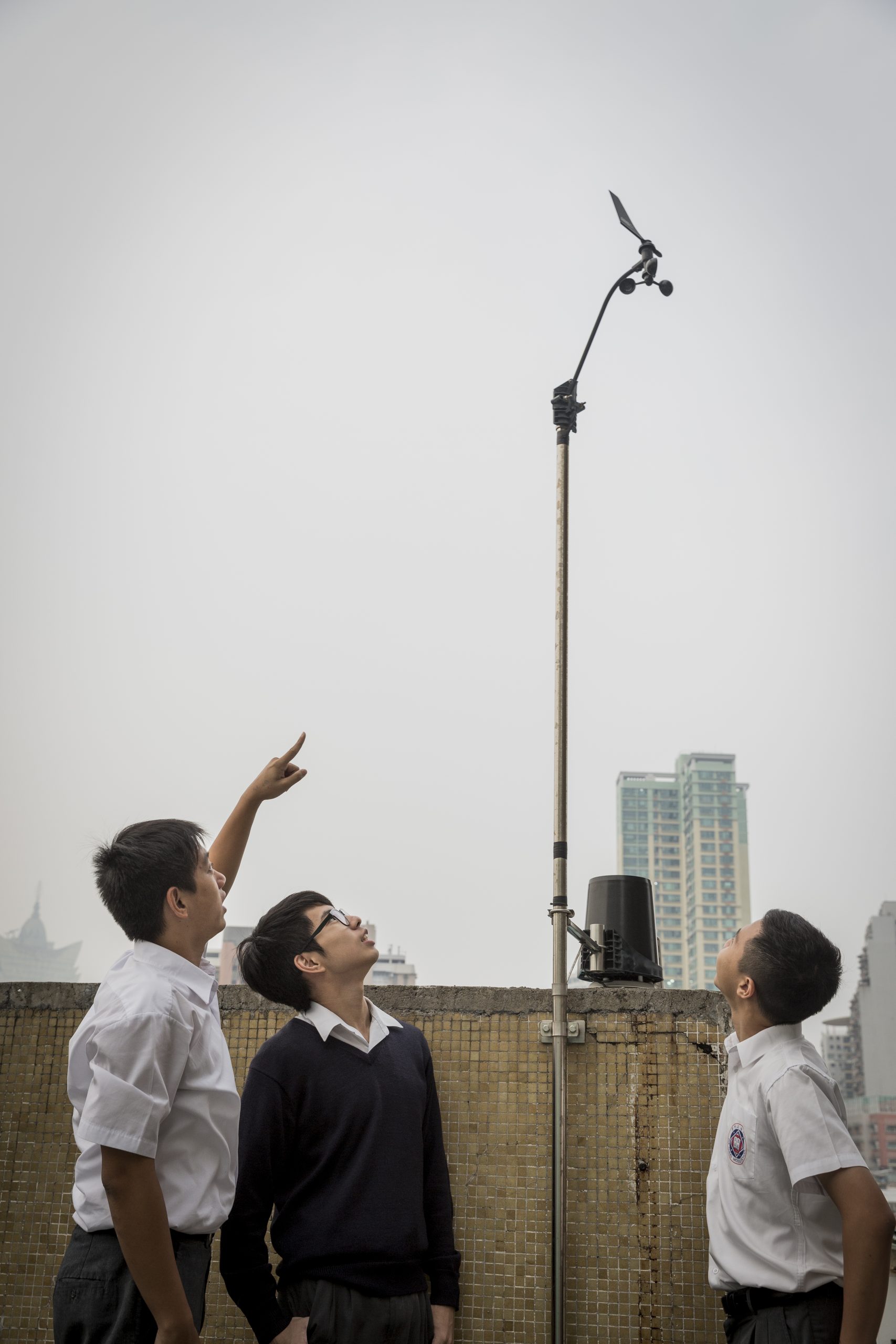
On 16 September 2018, as the citizens of Macao waited anxiously for the passing of Typhoon Mangkhut – one of the most powerful storms to hit the region in decades – the core members of Pui Ching’s Astronomical and Meteorological Association had an important duty to fulfil: they had been monitoring the movement of Mangkhut since six in the morning. The No 10 signal was hoisted for nine hours, the longest period since 1968.
A year earlier, the Astronomical and Meteorological Association had launched a website, together with a Facebook page, to provide updated meteorological information to Macao citizens. The association gets particularly busy when bad weather strikes, but on normal days, they continue to research on credible meteorological websites and share useful information on their own page. It may easily take them two hours to prepare for the publication of one single post.
That hard work has paid off: the efficient broadcasting of the latest developments with Typhoon Mangkhut earned them numerous ‘likes’ and page shares, along with compliments such as “I can’t believe this is done by secondary school students!” and “This is so professional! Good job to the dedicated students!”
The association also saw a rapid increase of membership applications from students since the typhoon. To promote interest in meteorology and astronomy, the association also works with Macao Science Center and local universities to organise a range of outreach activities such as seminars and star observations for its members.
